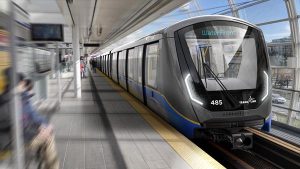 Thales will provide 82 innovative SelTrac vehicle on-board controllers (VOBCs) for 41 new trains for Vancouver SkyTrain fleet expansion which will operate on the Expo and Millennium lines.
Thales will provide 82 innovative SelTrac vehicle on-board controllers (VOBCs) for 41 new trains for Vancouver SkyTrain fleet expansion which will operate on the Expo and Millennium lines.
The VOBC technology controls propulsion, braking, direction of travel, door operations, enforce speed limits and report identified faults. It is also a key component of SelTrac CBTC system, which is equipped on the two urban rail lines, allowing the new trains to operate safely and efficiently with the existing fleet.
In December 2020, TransLink, the company which manages the Vancouver transport system, awarded Bombardier Transportation a EUR 461 million contract for the delivery of 205 new rail cars for the two lines. The modern 5-car trains will provide additional capacity to meet the region’s current and future transport needs.
Under the contract 125 new SkyTrain cars will replace the first-generation MKI vehicles which entered service in 1985, and to support the Broadway Subway project. 80 SkyTrain cars will enter transport operation on the Expo and Millennium lines to improve the transport capacity, while the option for additional cars, stipulated in the contract, will support the Surrey Langley SkyTrain.
The procurement of the new Vancouver SkyTrain cars is part of the Expo Millennium Line upgrade programme. The project is funded with an investment of CAD 1.47 billion (USD 1.15 billion) through the Investing in Canada Infrastructure Programme with contributions from the Government of Canada, Government of British Columbia and TransLink.
The Expo Line was the region’s first rail rapid transit line and connects downtown Vancouver with the cities of Burnaby, New Westminster, and Surrey. The Millennium line offer transport connection from East Vancouver through to Burnaby and into Port Moody and Coquitlam. When the upgrade programme is fully implemented, the Expo Line will be able to move 17,500 passengers per hour per direction, and the Millennium Line will be able to move 7,500 passengers per hour per direction. This represents a 32 and 96 per cent increase respectively over the existing capacity.
Share on:



